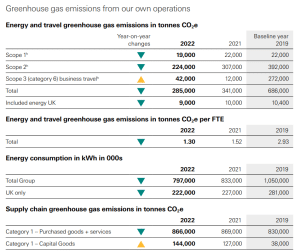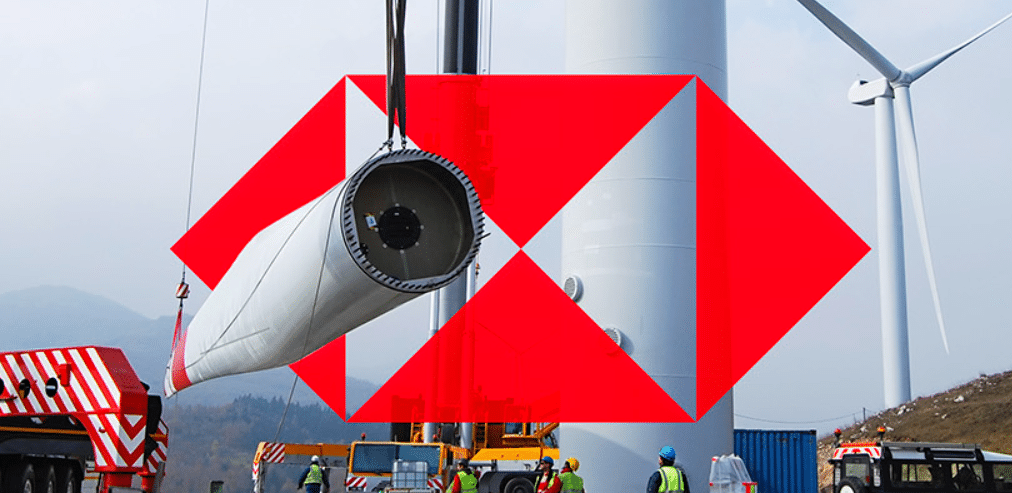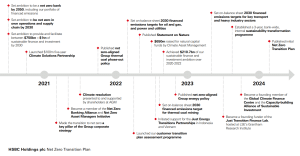Global financial services group HSBC is launching a new business unit, HSBC Infrastructure Finance (HIF), to focus on infrastructure financing and project finance advisory opportunities tied to the transition to a low-carbon economy. The bank has appointed former UK Member of Parliament Danny Alexander as CEO of the new unit.
HIF aims to secure a significant share of deals in major markets. It will also integrate elements from the bank’s Global Banking Real Asset Finance team.
Taking the Helm and Driving Infrastructure Finance in Transition Markets
The new unit plans to expand HSBC’s debt origination and distribution businesses by building new relationships with both public and private sector entities.
Greg Guyett, CEO of Global Banking and Markets at HSBC, remarked on the announcement, noting that:
“We have a leading presence in the regions where infrastructure needs to be developed and financed to enable a just transition to a low carbon economy. We also look to support the UK government’s program to build critical infrastructure in Britain to grow the economy whilst decarbonizing it.”
Danny Alexander, currently the vice president for policy and strategy at the Asian Infrastructure Investment Bank (AIIB) and a former UK government minister, will lead the division.
Alexander’s appointment is intended to accelerate collaboration with governments, multilateral development banks, and companies, including supporting the UK government’s new initiatives.
In his post announcing the appointment, Alexander expressed his excitement about leading HIF and pursuing significant infrastructure financing and advisory opportunities related to the low carbon transition in strategic markets.
HSBC’s Net Zero Plan
The launch of HIF follows HSBC’s release of its first Net Zero Transition Plan earlier this year, detailing its strategy to finance and support the transition to net zero. The bank set a 2050 net zero target in 2020, committing to align its financing activities with the Paris Agreement’s goals.
In 2021, HSBC made the transition to net zero one of the 4 key pillars of our corporate strategy. Since 2020, the global financier has taken several steps to begin executing its net zero ambition and managing climate risks. The banking company’s net zero journey is below.
HSBC NET ZERO JOURNEY
The bank’s transition plan covers the HSBC Group and it focuses primarily on the sectors and customers where they anticipate making the most significant impact on emissions reductions.
For each sector, the bank describes the necessary technologies, investment needs, and external dependencies for a viable net zero by 2050 pathway, and identifies where a 1.5°C-aligned 2030 pathway is most at risk. The company also outlines its related portfolio, aims, targets, and actions to support sector decarbonization.
HSBC’s emissions from its own operations and supply chain are relatively small compared to its financed emissions, but reducing them is crucial for becoming a net zero bank.
HSBC Greenhouse Gas Emissions from Own Operations

The bank aims to achieve net zero in its own operations and supply chain by 2030, including 100% renewable electricity and minimizing its direct impact on nature. This involves cutting emissions across energy consumption, travel, and supply chains.
In 2022, HSBC exceeded targeted reductions by achieving a 58.5% decrease in energy and travel emissions compared to 2019 levels. This accomplishment was driven by the bank’s three key efforts:
- A 24% reduction in energy consumption achieved through optimizing building use and strategically reducing office space and data center operations.
- Purchasing 48% of energy from renewable sources by leveraging renewable tariffs and engaging with landlords.
- An 85% reduction in business travel, primarily attributed to Covid-19-related international travel restrictions.
Looking forward to 2030, HSBC aims for a further 50% reduction in energy consumption. High-quality carbon removal or offsets will be used only for residual emissions that cannot be otherwise reduced from 2030 onwards.
The financier engages with market participants to develop carbon credits and support initiatives for a credible carbon market. Climate Asset Management, HSBC’s joint venture, is sourcing high-quality carbon removals. The bank also participates in HKEX’s International Carbon Market Council and advocate for integrity in the voluntary carbon market through initiatives like the Integrity Council.
Aligning Financing with Global Climate Goals
To achieve GHG emissions reduction targets and reach net zero, HSBC is implementing a plan, focusing on these three areas:
-
Supporting Customers
HSBC is prioritizing the transition of its customers to net zero by providing finance, services, insights, and tools. The bank is engaging with corporate customers on their transition plans and offering products and services to facilitate this shift.
-
Transforming Operations
In 2021, HSBC made the “transition to net zero” one of the four pillars of its corporate strategy. This integration into the corporate strategy has led to embedding net zero considerations into sustainability risk policies, risk evaluation, decision-making tools, and processes. The bank aims to be net zero in its own operations and supply chain by 2030.
-
Partnering for Systemic Change
HSBC is engaging with stakeholders across geographies to support policies, regulations, and partnerships that facilitate the transition to net zero. The bank is a signatory of the Taskforce on Climate-related Financial Disclosures (TCFD) and advocates for climate risk disclosures.
The bank also pledged to prioritize financing and investment that contributes to the low carbon transition, aiming to support customers with $750 billion to $1 trillion in finance and investment by 2030.



